Search Results
Search
Filter results
Advanced Filters
Your search returned 883 Solutions
-
Youth transition programme
The Youth Transition Program (YTP) is a collaborative school-to-work transition programme that serves young adults with disabilities statewide in Oregon, USA. The purpose of YTP is to prepare young adults for employment or career-related post-secondary education. YTP is jointly funded by local schools and Oregon Vocational Rehabilitation.
University of Oregon, Youth transition programme, United States of America -
A dedicated TV channel for the hearing impaired
Broadcasting of the Listening with Your Eyes channel began in 2017. The channel allows conventional programmes to provide closed captioning and sign language displayed over the original content. The size and position of the captioning and sign on the display can be determined by the viewer using a remote control and receiver.
Organization for Broadcasting and Communications for People with Disabilities, Japan -
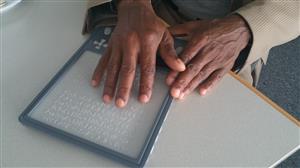
A tablet that creates Braille, graphics, maps, and more
BLITAB – the iPad for the blind as it is called also – is the first-ever Braille tablet, using a new liquid-based technology to create tactile relief that produces Braille, graphics, maps, etc., for the blind and partially sighted. From the very start, blind and visually impaired users were involved in the product development.
BLITAB Technology Gmbh, Austria -
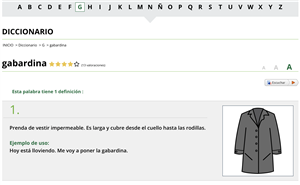
Free online Spanish dictionary written according to easy reading guidelines
Diccionario Fácil is a free online Spanish dictionary service developed by Plena Inclusion Madrid, an NGO. It provides definitions according to the Easy Reading Guidelines, validated by people with intellectual disabilities, and also providing employment opportunities for them.
Plena Inclusion Madrid, Diccionario Fácil – Easy Dictionary, Spain -
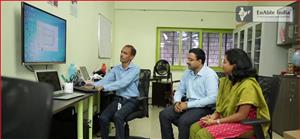
Free learning tool for visually impaired persons to improve their computer skills
The EYE Tool is a self-learning tool that teaches visually impaired people digital skills to prepare them for computer-based workplaces. Users can choose from over 400 exercises, participate in job role simulations, receive feedback, and test their progress. EYE Tool has over 10,000 users in 15 countries.
Enable India, Educate Yourself Easily (EYE) Tool, India -
Online platform to prepare all students for final primary school exams
The free online platform supports schoolchildren with and without disabilities in their preparation in mathematics and the Serbian language. The exam questions are available in various formats, along with functions in Easy Language and explanatory pictures. Since its launch in 2015, almost 4,000 school children have benefited.
Mathematicial Society of Serbia, Final Exam, Serbia -
Increasing political participation through targeted lobbying on many levels
Measures focus on engaging with election stakeholders, but also include lobbying political contestants, holding public debates, and promoting media coverage. Successes include the involvement of people with disabilities by the Electoral Commission and the introduction of tactile ballot papers.
FEDOMA - Federation of Disability Organizations in Malawi, Malawi -
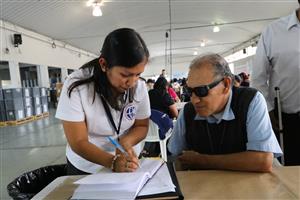
Lottery funds for employment support of people with hearing or visual disabilities
People with hearing or visual impairments are supported in professional skills development and career planning by specialized trainers. Employers also receive staff training and other support. Since 2009, 703 people were hired as a result of the programme and 43 businesses have joined the NGO’s network.
Committee for People Who Are Blind and Deaf in Guatemala, Labour Inclusion and Entrepreneurship Programme, Guatemala -
AppHear is a mobile hearing aid to make information and communication accessible in supermarkets. It can easily be fitted as an accessory to shopping carts.
AppHear is a tool that helps provide a clear understanding of acoustical information in shopping centres. The customer does not need to stand close to an information booth or carry a receiver since AppHear is attached directly to the shopping cart. The shopping centre does not need to install any additional technology or provide additional equipment.
Bloom Hörakustik, Mobile hearing aid attachable to shopping carts, Austria -
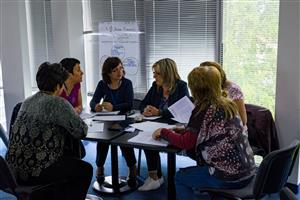
A systematic approach to creating inclusive school environments
"One school for All" is the first whole school approach to Inclusive Education in Bulgaria. The two-year programme offers schools a structured and systemic approach in four key areas: school leadership, teaching practices, partnership with parents, and child safety. In Bulgaria, the programme costs around € 5,200 for a school.
Association for Shared Learning ELA, One School for All – a model for creating inclusive school environments, Bulgaria
- Page 1
- Page 2
- Page 3
- Page 4
- Page 5
- Page 6
- Page 7
- Page 8
- Page 9
- Page 10
- Page 11
- Page 12
- Page 13
- Page 14
- Page 15
- Page 16
- Page 17
- Page 18
- Page 19
- Page 20
- Page 21
- Page 22
- Page 23
- Page 24
- Page 25
- Page 26
- Page 27
- Page 28
- Page 29
- Page 30
- Page 31
- Page 32
- Page 33
- Page 34
- Page 35
- Page 36
- Page 37
- Page 38
- Page 39
- Page 40
- Page 41
- Page 42
- Page 43
- Page 44
- Page 45
- Page 46
- Page 47
- Page 48
- Page 49
- Page 50
- Page 51
- Page 52
- Page 53
- Page 54
- Page 55
- Page 56
- Page 57
- Page 58
- Page 59
- Page 60
- Page 61
- Page 62
- Page 63
- Page 64
- Page 65
- Page 66
- Page 67
- Page 68
- Page 69
- Page 70
- Page 71
- Page 72
- Page 73
- Page 74
- Page 75
- Page 76
- Page 77
- Page 78
- Page 79
- Page 80
- Page 81
- Page 82
- Page 83
- Page 84
- Page 85
- Page 86
- Page 87
- Page 88
- Page 89